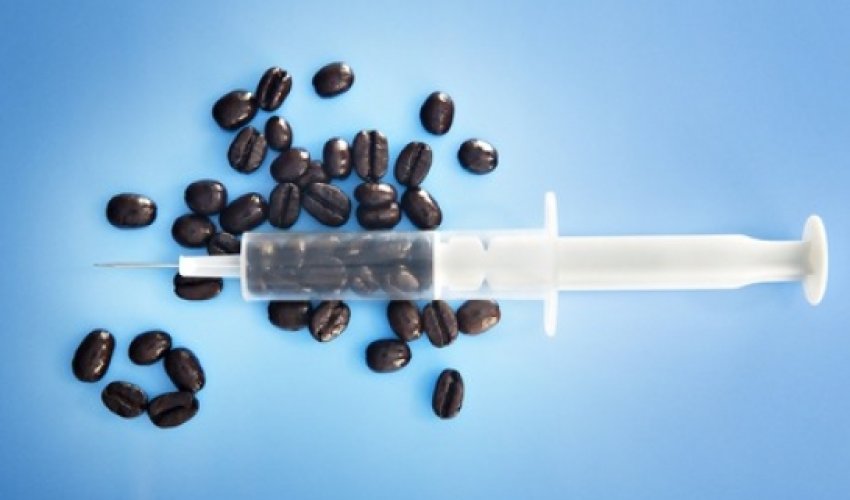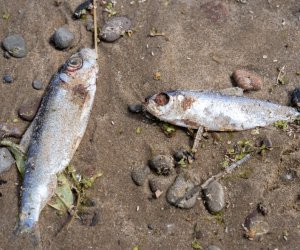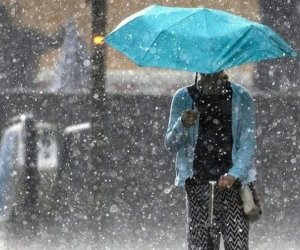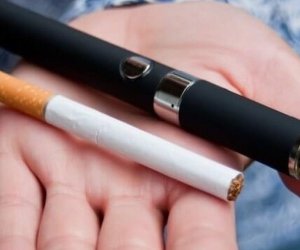Generation jitters: are we addicted to caffeine?

On 9 April 2010, 23-year-old Michael Bedford was at a party near his home in Mansfield. He ate two spoonfuls of caffeine powder he'd bought online, and washed them down with an energy drink. He began slurring his words, then vomited, collapsed and died. It's likely he ingested more than 5g of caffeine. The coroner cited caffeine's "cardiotoxic effects" as the cause of death.How much caffeine is the average person taking on daily? When someone asks about our caffeine habits, we tend to reply in terms of how many cups of coffee we drink. But this is a wildly inadequate measure. One 40ml cup of coffee – the size often used in studies of caffeine consumption – could have less than 60mg of caffeine, while one 450ml cup could have nearly 10 times as much, but both could be considered one cup of coffee.In an effort to make this easier, I came up with a measure called a Standard Caffeine Dose, or Scad. A Scad is 75mg. This is roughly equal to a shot of espresso, 150ml of coffee, a 250ml can of Red Bull, two 350ml cans of Coke or Pepsi, or a pint of Diet Coke. I take about four or five Scads daily. On a two-Scad day, I will feel slow; on a seven-Scad day, jittery.Anyone will tell you that the British have remained allied with tea, not coffee, but that is only partly true. While the British still drink more tea, by volume, than coffee, they now get more of their caffeine from coffee than from tea. Surprisingly, colas and energy drinks now contribute nearly as much caffeine to the British diet as tea: 34mg daily versus 36mg daily.It is not easy to know how much caffeine is in your daily cup of coffee. Forensic toxicologist Bruce Goldberger used to work in Baltimore, identifying lethal drugs in the blood of overdose victims. But he turned his mind to a question with broader appeal: how much caffeine are we getting in our beverages? He and his colleagues analysed the contents of coffee drinks, publishing the results in 2003. They found huge caffeine differences not only between coffee brands but also between coffees from the same shop. He bought a 480ml cup of coffee from one branch of Starbucks on six consecutive days. Each time, he ordered the Breakfast Blend. The cup with the least caffeine had 260mg. One had twice that amount. Yet another clocked in at a whopping 564mg.For a study published in 2012, Scottish researcher Thomas Crozier and his colleagues bought 20 espressos in Glasgow cafes. They found that the caffeine concentration varied from 56mg to 196mg per 28ml, with four cafes serving up espressos containing more than 200mg of caffeine.Coffee beans in a clear plastic bagWhat's your drug of choice? Image: Liz McBurney for the GuardianCrozier and Goldberger's studies help to answer a question that many coffee drinkers have asked: why is it that on some days one cup of coffee puts you in absolute equipoise – brilliant but steady, relaxed but energetic – while other days it is not even enough to prop open your eyelids? And on other occasions, that very same cup, from the same cafe, will send you to the moon, jittery and anxious, your heart skittering? It is because the caffeine levels in coffee vary dramatically, depending on the natural growing conditions, the variety of coffee plant and the brewing strength.Roland Griffiths is a prolific drug researcher. "I'm a psychopharmacologist, so I'm interested in the mood-altering effects of drugs," he says. "Caffeine to me is maybe the most fascinating compound, because it clearly is psychoactive, yet it is completely culturally accepted worldwide, or almost worldwide." While we talk, he sips caffeine-free Diet Coke from a mug bearing the structural diagram of the caffeine molecule.Even though caffeine is not considered to be a drug of abuse, it has all the features of one, Griffiths says. "That is, it alters mood, it produces physical dependence and withdrawal upon abstinence, and some proportion of the population becomes dependent on it."When Griffiths started his experiments on caffeine, he was a heavy user: "I think my consumption was probably 500-600mg a day, maybe higher." That's more than one litre of good coffee. When he decided to study caffeine withdrawal, he did it the hard way, personally going from a daily dose of seven Scads down to zero, and paying close attention to the havoc it wreaked on his body and brain. Did he go cold turkey? "No, no! I'm enough of a psychopharmacologist to know that's not how I would want to do it. I tapered back."As part of a series of studies, using themselves as guinea pigs, Griffiths and his colleagues went on a steady daily dose of 100mg of caffeine. In one experiment, their caffeine was cut altogether for 12 days. Four of the seven subjects experienced symptoms including headaches, lethargy and an inability to concentrate. In the second phase, the researchers, still on a steady 100mg daily dose, went for single days without caffeine, separated by more than a week. In this case, "each of the seven subjects demonstrated a statistically significant withdrawal effect".These scientists were not withdrawing from massive doses of caffeine, just the amount in about 150–240ml of coffee, a Scad and a third. That is all it takes to get hooked.Coca-Cola owes its success to caffeine. Its early formulation had 80mg of caffeine per 250ml serving, and it was marketed as a pick-me-up. That was in 1909, when the US federal government first tried and failed to corral the emerging caffeine economy, leaving a vacuum that persists to this day. The American Food and Drug Administration (FDA) has long practised a dual regulatory role for caffeine, regulating it when it's packaged as an over-the-counter medication and mostly ignoring it when it is blended into drinks or labelled as a dietary supplement. But the new generation of energy products seems to have caught their attention.When you crack open a can of Monster Energy, you first hear the hiss of the escaping carbonation. Poured into a glass, Monster is about the colour of a pale ale. On the tongue, well, it's an acquired taste: slightly metallic, syrupy sweet, a faint hint of orange and cream. No, it's not a hot cup of Colombian, but you could get used to it. Millions have. With a striking logo of three neon green claw marks and the slogan "Unleash the beast", Monster seems to be everywhere. In 2011, it surpassed Red Bull in US energy drink sales, by volume, according to Beverage Digest.Fizzy drinksA can of some energy drinks can contain up to 160mg of caffeine. Photograph: AlamyMonster evolved from a product called Hansen's Energy, introduced by the juice company Hansen's Natural in 1997. Sales took off in 2002 when they came up with the Monster name, its memorable slogan and distinctive logo. (The claw-mark logo is now a popular tattoo, even among high school students.) Hansen's made its Monster cans twice the size of a Red Bull, but charged the same price. They developed a marketing strategy like those of other energy drinks, targeting young males with an energetic blend of heavy metal bands, action sports festivals and bikini models. Within seven years, it was a billion-dollar brand, with sales of nearly $2.4bn in 2012.In the summer of that year, New York state attorney general Eric Schneiderman started to look at the marketing and advertising practices of companies who make energy drinks. Meanwhile, several US senators were putting pressure on the FDA to better regulate the industry. In August, FDA assistant commissioner for legislation Jeanne Ireland responded to the senators' concerns with a five-page letter outlining the regulatory framework for energy drinks. She also discussed a death that was getting some attention.Anais Fournier, a 14-year-old from Hagerstown, Maryland, drank a can of Monster on 16 December 2011. The next evening, with her friends at the Valley Mall, she drank another can of Monster Energy, bought from a sweet shop. Each can contained 240mg of caffeine (three Scads). A few hours after leaving the mall, Fournier was at home watching a movie with her family when she went into cardiac arrest and fell unconscious. At the hospital, doctors put her into a medically induced coma. Six days later, she was taken off life support and died. The coroner listed the cause of death as "cardiac arrhythmia due to caffeine toxicity complicating mitral valve regulation in the setting of Ehlers-Danlos syndrome" (a pre-existing medical condition).In November 2012, the FDA released a comprehensive list of nearly eight years of what they call "adverse event reports" (consumer complaints) related to Monster, Rockstar and 5-Hour Energy products. It was a list of 93 events, including 13 deaths. There is no way of knowing whether the energy products caused the deaths, but it was enough to scare the public and prompt the FDA to announce an investigation. They advised that people should consult their doctor before consuming energy drinks or shots. This seemed notable – dramatic, even – particularly considering the fact that the agency does not recommend checking with GPs before drinking colas or coffee.A cup of tea A cup of English breakfast tea can contain as much as 22mg of caffeine. Photograph: AlamyIt is hard to unravel the health problems attributed to energy drinks. Any of us who use caffeine eventually take more than we want to and might experience the sensation of a pounding heart. A bit too much caffeine is unlikely to harm your heart. Even among those people with arrhythmias – disorders that cause the heart to beat too fast, too slowly or irregularly – caffeine does little harm. A 2011 literature review published in the American Journal of Medicine found no reason for concern. "It is understandable that most physicians are unsure of the advice they can provide about caffeine intake and arrhythmias," Daniel Pelchovitz and Jeffrey Goldberger wrote. "In most patients with known or suspected arrhythmia, caffeine in moderate doses is well tolerated and there is therefore no reason to restrict ingestion of caffeine." It would be easy to be sceptical of this finding: Goldberger is a consultant for Red Bull, and there is the sense that caffeine can feel hard on the heart. But, despite numerous studies, doctors have been unable to find a link between moderate caffeine use and heart disease or disturbance in most people. However, recent research does suggest an association between coffee and nonfatal heart attacks in people with a genetic predisposition to metabolise caffeine slowly.It would be safe to assume that if a 240mg dose of caffeine, which Fournier consumed, could kill a person, then Starbucks would have seen at least a few deaths from its coffee, which might contain this amount of caffeine in a 350ml or 500ml cup. A person might drink energy drinks and then have a heart problem, but did the former cause the latter, or are they unrelated? It might be that people who suffer a heart attack after drinking an energy shot or energy drink are more likely to associate the heart trouble with the product than are people who suffer heart attacks after drinking coffee. It would be a simple explanation, and one that could hold some appeal for the energy drink industry. But in Fournier's case there was the coroner's report listing caffeine toxicity as the cause of death (although the coroner also mentioned a pre-existing medical condition).On 17 October 2012, a team of attorneys filed a civil action with the Riverside County Superior Court of California. It was titled "Wendy Crossland and Richard Fournier; individually and as surviving parents of Anais Fournier v Monster Beverage Corporation." The case contained seven complaints, including negligence and wrongful death. The lawyers sent out a press release, quoting Fournier's mother. "I was shocked to learn the FDA can regulate caffeine in a can of soda, but not these huge energy drinks," Wendy Crossland said. "These drinks are targeting teenagers with no oversight or accountability. [They] are death traps for young, developing girls and boys, like my daughter Anais."Monster is defending the case. It is questioning the medical evidence and claims Fournier regularly drank energy drinks and Starbucks coffee. It says the autopsy report of caffeine toxicity was based only on Fournier's mother's report of her drinking an energy drink, not on a blood test. It has also detailed her heart conditions.On 1 May 2013, a gaggle of food industry honchos from Wrigley, Mars and legal and lobbying firm Patton Boggs, which represents the soft drink industry, rushed in to see Michael Taylor, the FDA's deputy commissioner for foods and veterinary medicine. On 29 April, Taylor had announced the agency would be investigating the safety of adding caffeine to food products for the first time since 1980. Surprisingly, the item that finally spurred the FDA into action was not any of the more extreme energy products, but a gum.In April, Wrigley had introduced Alert Energy Caffeine Gum. But a week after the delegation met with the FDA, on 8 May, Wrigley said it was pulling the product from the market. "After discussions with the FDA, we have a greater appreciation for its concern about the proliferation of caffeine in the nation's food supply," Wrigley announced. "We have paused the production, sales and marketing of Alert."A month later, I went to Maryland to interview Taylor. He told me that the new energy products have broken out of the typical boundaries around caffeine and are a far cry from coffee, tea and chocolate. And in the process, the food industry is skirting food additive regulations. Taylor drinks coffee and Diet Coke (sometimes caffeine-free), and understands the challenge of regulating caffeine and the limits regulators might face. "I got asked by somebody, 'Are we going to put age limits on coffee, so if you go to Starbucks, would you have to show ID?' I would consider that not realistic," he said. But he made a distinction between the more traditional uses of caffeine and the new breed of energy drinks. Holding a can of Monster, he said, "This is not a historic, cultural aspect of caffeine… What I found disturbing on this front was that in no case did the companies that are making these decisions come to us... and subject themselves to the scrutiny that would come." The entire energy products industry, worth more than $10bn annually, has grown without the FDA's explicit approval.The UK is moving ahead of the US in caffeine labelling. Starting in December, the Food Standards Agency will require new labels for energy drinks. Any drinks with caffeine concentrations higher than 150mg per litre must carry this label: "High caffeine content. Not recommended for children or pregnant or breastfeeding women." The label must be placed in the same field of vision as the name of the energy drink and show the quantity of caffeine. It will appear on Red Bull, for example, with its concentration of 320mg per litre, but not Coca-Cola, with a lower concentration of 95mg per litre. In November last year, meanwhile, Morrisons became the first UK supermarket chain to ban sales of high-caffeine energy drinks to children.Walking out of FDA headquarters, I passed a display case of the agency's notable efforts. There were packages of the drug thalidomide. There were a few patent medicines. The only caffeine was in a bottle of Formula One, an ephedra-caffeine blend that has been linked with heart trouble. (Supplements containing ephedra were banned and Formula One was reformulated.) I wondered what the case might hold in 20 years. Maybe some example of caffeinated excess now on the market – or, more likely, one that has yet to be formulated.Travelling back to Maine that afternoon, I stopped for petrol. The counter next to the cash register was cluttered with energy shots and energy strips. And there, tucked into the front of the display tray, was a single pack of the Wrigley Alert Energy gum. It was the first I'd seen of the product Wrigley had tried to pull off the shelves. Of course, I bought it. Who knows? It might be worth something some day.Crozier and Goldberger's studies help to answer a question that many coffee drinkers have asked: why is it that on some days one cup of coffee puts you in absolute equipoise – brilliant but steady, relaxed but energetic – while other days it is not even enough to prop open your eyelids? And on other occasions, that very same cup, from the same cafe, will send you to the moon, jittery and anxious, your heart skittering? It is because the caffeine levels in coffee vary dramatically, depending on the natural growing conditions, the variety of coffee plant and the brewing strength.Roland Griffiths is a prolific drug researcher. "I'm a psychopharmacologist, so I'm interested in the mood-altering effects of drugs," he says. "Caffeine to me is maybe the most fascinating compound, because it clearly is psychoactive, yet it is completely culturally accepted worldwide, or almost worldwide." While we talk, he sips caffeine-free Diet Coke from a mug bearing the structural diagram of the caffeine molecule.Even though caffeine is not considered to be a drug of abuse, it has all the features of one, Griffiths says. "That is, it alters mood, it produces physical dependence and withdrawal upon abstinence, and some proportion of the population becomes dependent on it."When Griffiths started his experiments on caffeine, he was a heavy user: "I think my consumption was probably 500-600mg a day, maybe higher." That's more than one litre of good coffee. When he decided to study caffeine withdrawal, he did it the hard way, personally going from a daily dose of seven Scads down to zero, and paying close attention to the havoc it wreaked on his body and brain. Did he go cold turkey? "No, no! I'm enough of a psychopharmacologist to know that's not how I would want to do it. I tapered back."As part of a series of studies, using themselves as guinea pigs, Griffiths and his colleagues went on a steady daily dose of 100mg of caffeine. In one experiment, their caffeine was cut altogether for 12 days. Four of the seven subjects experienced symptoms including headaches, lethargy and an inability to concentrate. In the second phase, the researchers, still on a steady 100mg daily dose, went for single days without caffeine, separated by more than a week. In this case, "each of the seven subjects demonstrated a statistically significant withdrawal effect".These scientists were not withdrawing from massive doses of caffeine, just the amount in about 150–240ml of coffee, a Scad and a third. That is all it takes to get hooked.Coca-Cola owes its success to caffeine. Its early formulation had 80mg of caffeine per 250ml serving, and it was marketed as a pick-me-up. That was in 1909, when the US federal government first tried and failed to corral the emerging caffeine economy, leaving a vacuum that persists to this day. The American Food and Drug Administration (FDA) has long practised a dual regulatory role for caffeine, regulating it when it's packaged as an over-the-counter medication and mostly ignoring it when it is blended into drinks or labelled as a dietary supplement. But the new generation of energy products seems to have caught their attention.When you crack open a can of Monster Energy, you first hear the hiss of the escaping carbonation. Poured into a glass, Monster is about the colour of a pale ale. On the tongue, well, it's an acquired taste: slightly metallic, syrupy sweet, a faint hint of orange and cream. No, it's not a hot cup of Colombian, but you could get used to it. Millions have. With a striking logo of three neon green claw marks and the slogan "Unleash the beast", Monster seems to be everywhere. In 2011, it surpassed Red Bull in US energy drink sales, by volume, according to Beverage Digest.Monster evolved from a product called Hansen's Energy, introduced by the juice company Hansen's Natural in 1997. Sales took off in 2002 when they came up with the Monster name, its memorable slogan and distinctive logo. (The claw-mark logo is now a popular tattoo, even among high school students.) Hansen's made its Monster cans twice the size of a Red Bull, but charged the same price. They developed a marketing strategy like those of other energy drinks, targeting young males with an energetic blend of heavy metal bands, action sports festivals and bikini models. Within seven years, it was a billion-dollar brand, with sales of nearly $2.4bn in 2012.In the summer of that year, New York state attorney general Eric Schneiderman started to look at the marketing and advertising practices of companies who make energy drinks. Meanwhile, several US senators were putting pressure on the FDA to better regulate the industry. In August, FDA assistant commissioner for legislation Jeanne Ireland responded to the senators' concerns with a five-page letter outlining the regulatory framework for energy drinks. She also discussed a death that was getting some attention.Anais Fournier, a 14-year-old from Hagerstown, Maryland, drank a can of Monster on 16 December 2011. The next evening, with her friends at the Valley Mall, she drank another can of Monster Energy, bought from a sweet shop. Each can contained 240mg of caffeine (three Scads). A few hours after leaving the mall, Fournier was at home watching a movie with her family when she went into cardiac arrest and fell unconscious. At the hospital, doctors put her into a medically induced coma. Six days later, she was taken off life support and died. The coroner listed the cause of death as "cardiac arrhythmia due to caffeine toxicity complicating mitral valve regulation in the setting of Ehlers-Danlos syndrome" (a pre-existing medical condition).In November 2012, the FDA released a comprehensive list of nearly eight years of what they call "adverse event reports" (consumer complaints) related to Monster, Rockstar and 5-Hour Energy products. It was a list of 93 events, including 13 deaths. There is no way of knowing whether the energy products caused the deaths, but it was enough to scare the public and prompt the FDA to announce an investigation. They advised that people should consult their doctor before consuming energy drinks or shots. This seemed notable – dramatic, even – particularly considering the fact that the agency does not recommend checking with GPs before drinking colas or coffee.It is hard to unravel the health problems attributed to energy drinks. Any of us who use caffeine eventually take more than we want to and might experience the sensation of a pounding heart. A bit too much caffeine is unlikely to harm your heart. Even among those people with arrhythmias – disorders that cause the heart to beat too fast, too slowly or irregularly – caffeine does little harm. A 2011 literature review published in the American Journal of Medicine found no reason for concern. "It is understandable that most physicians are unsure of the advice they can provide about caffeine intake and arrhythmias," Daniel Pelchovitz and Jeffrey Goldberger wrote. "In most patients with known or suspected arrhythmia, caffeine in moderate doses is well tolerated and there is therefore no reason to restrict ingestion of caffeine." It would be easy to be sceptical of this finding: Goldberger is a consultant for Red Bull, and there is the sense that caffeine can feel hard on the heart. But, despite numerous studies, doctors have been unable to find a link between moderate caffeine use and heart disease or disturbance in most people. However, recent research does suggest an association between coffee and nonfatal heart attacks in people with a genetic predisposition to metabolise caffeine slowly.It would be safe to assume that if a 240mg dose of caffeine, which Fournier consumed, could kill a person, then Starbucks would have seen at least a few deaths from its coffee, which might contain this amount of caffeine in a 350ml or 500ml cup. A person might drink energy drinks and then have a heart problem, but did the former cause the latter, or are they unrelated? It might be that people who suffer a heart attack after drinking an energy shot or energy drink are more likely to associate the heart trouble with the product than are people who suffer heart attacks after drinking coffee. It would be a simple explanation, and one that could hold some appeal for the energy drink industry. But in Fournier's case there was the coroner's report listing caffeine toxicity as the cause of death (although the coroner also mentioned a pre-existing medical condition).On 17 October 2012, a team of attorneys filed a civil action with the Riverside County Superior Court of California. It was titled "Wendy Crossland and Richard Fournier; individually and as surviving parents of Anais Fournier v Monster Beverage Corporation." The case contained seven complaints, including negligence and wrongful death. The lawyers sent out a press release, quoting Fournier's mother. "I was shocked to learn the FDA can regulate caffeine in a can of soda, but not these huge energy drinks," Wendy Crossland said. "These drinks are targeting teenagers with no oversight or accountability. [They] are death traps for young, developing girls and boys, like my daughter Anais."Monster is defending the case. It is questioning the medical evidence and claims Fournier regularly drank energy drinks and Starbucks coffee. It says the autopsy report of caffeine toxicity was based only on Fournier's mother's report of her drinking an energy drink, not on a blood test. It has also detailed her heart conditions.On 1 May 2013, a gaggle of food industry honchos from Wrigley, Mars and legal and lobbying firm Patton Boggs, which represents the soft drink industry, rushed in to see Michael Taylor, the FDA's deputy commissioner for foods and veterinary medicine. On 29 April, Taylor had announced the agency would be investigating the safety of adding caffeine to food products for the first time since 1980. Surprisingly, the item that finally spurred the FDA into action was not any of the more extreme energy products, but a gum.In April, Wrigley had introduced Alert Energy Caffeine Gum. But a week after the delegation met with the FDA, on 8 May, Wrigley said it was pulling the product from the market. "After discussions with the FDA, we have a greater appreciation for its concern about the proliferation of caffeine in the nation's food supply," Wrigley announced. "We have paused the production, sales and marketing of Alert."A month later, I went to Maryland to interview Taylor. He told me that the new energy products have broken out of the typical boundaries around caffeine and are a far cry from coffee, tea and chocolate. And in the process, the food industry is skirting food additive regulations. Taylor drinks coffee and Diet Coke (sometimes caffeine-free), and understands the challenge of regulating caffeine and the limits regulators might face. "I got asked by somebody, 'Are we going to put age limits on coffee, so if you go to Starbucks, would you have to show ID?' I would consider that not realistic," he said. But he made a distinction between the more traditional uses of caffeine and the new breed of energy drinks. Holding a can of Monster, he said, "This is not a historic, cultural aspect of caffeine… What I found disturbing on this front was that in no case did the companies that are making these decisions come to us... and subject themselves to the scrutiny that would come." The entire energy products industry, worth more than $10bn annually, has grown without the FDA's explicit approval.The UK is moving ahead of the US in caffeine labelling. Starting in December, the Food Standards Agency will require new labels for energy drinks. Any drinks with caffeine concentrations higher than 150mg per litre must carry this label: "High caffeine content. Not recommended for children or pregnant or breastfeeding women." The label must be placed in the same field of vision as the name of the energy drink and show the quantity of caffeine. It will appear on Red Bull, for example, with its concentration of 320mg per litre, but not Coca-Cola, with a lower concentration of 95mg per litre. In November last year, meanwhile, Morrisons became the first UK supermarket chain to ban sales of high-caffeine energy drinks to children.Walking out of FDA headquarters, I passed a display case of the agency's notable efforts. There were packages of the drug thalidomide. There were a few patent medicines. The only caffeine was in a bottle of Formula One, an ephedra-caffeine blend that has been linked with heart trouble. (Supplements containing ephedra were banned and Formula One was reformulated.) I wondered what the case might hold in 20 years. Maybe some example of caffeinated excess now on the market – or, more likely, one that has yet to be formulated.Travelling back to Maine that afternoon, I stopped for petrol. The counter next to the cash register was cluttered with energy shots and energy strips. And there, tucked into the front of the display tray, was a single pack of the Wrigley Alert Energy gum. It was the first I'd seen of the product Wrigley had tried to pull off the shelves. Of course, I bought it. Who knows? It might be worth something some day.(theguardian.com)ANN.Az
Latest news 
More news 



































 Photo
Photo 



 Video
Video 

